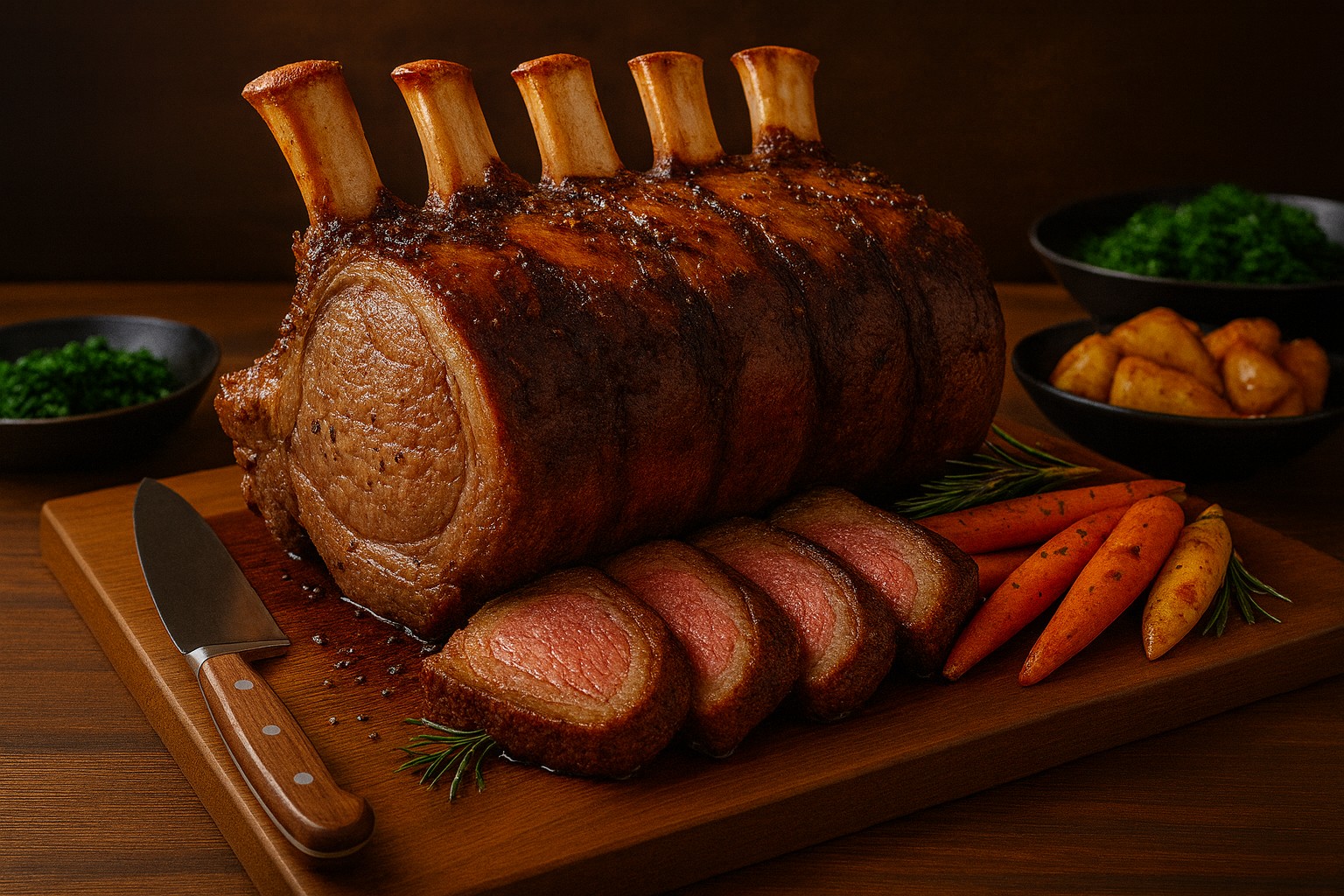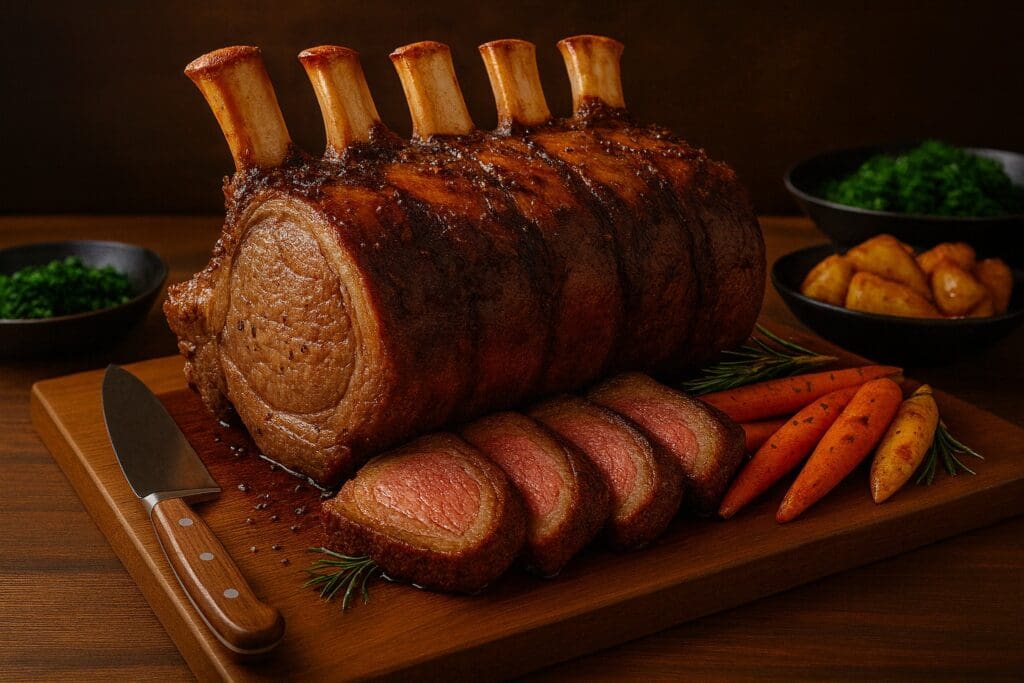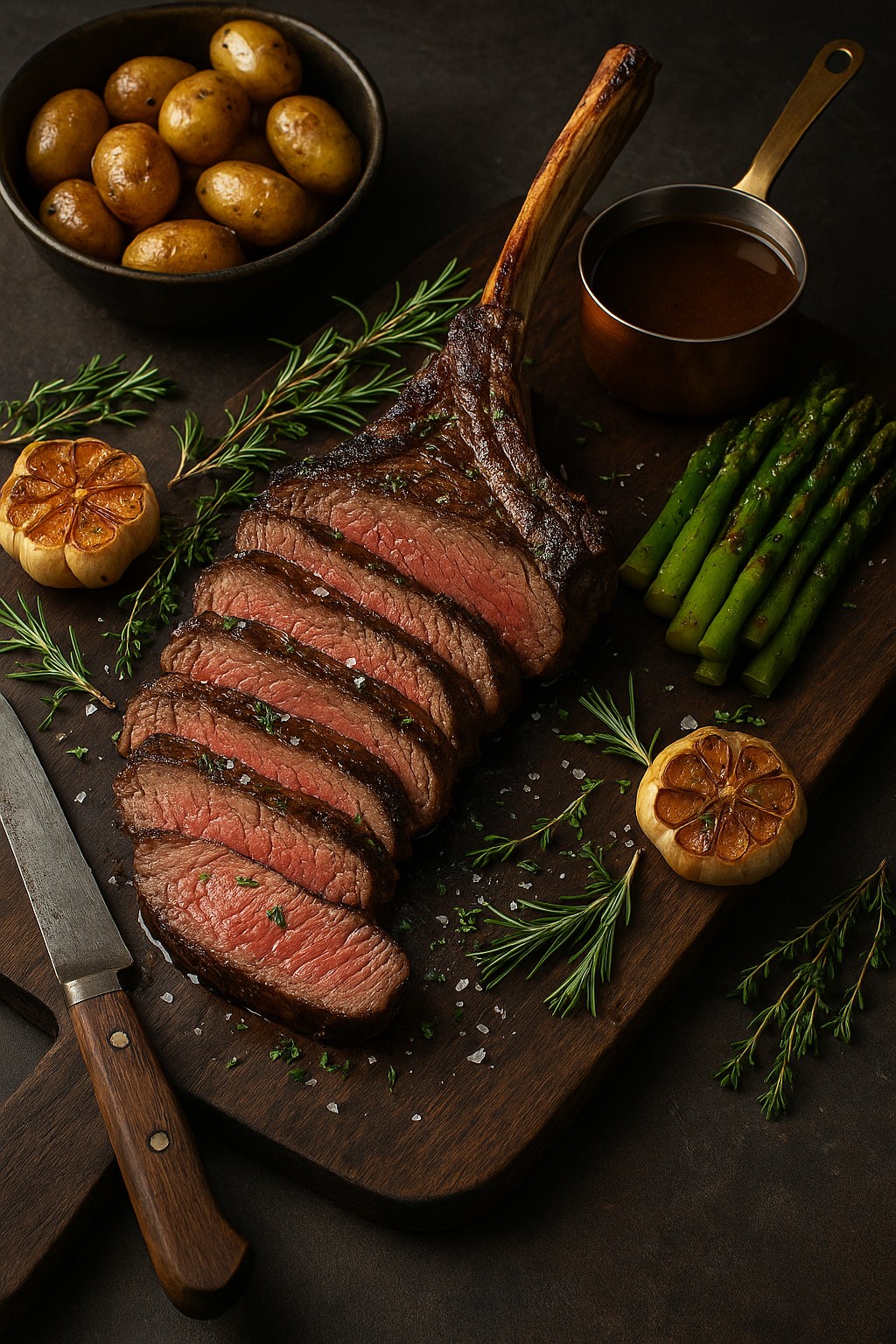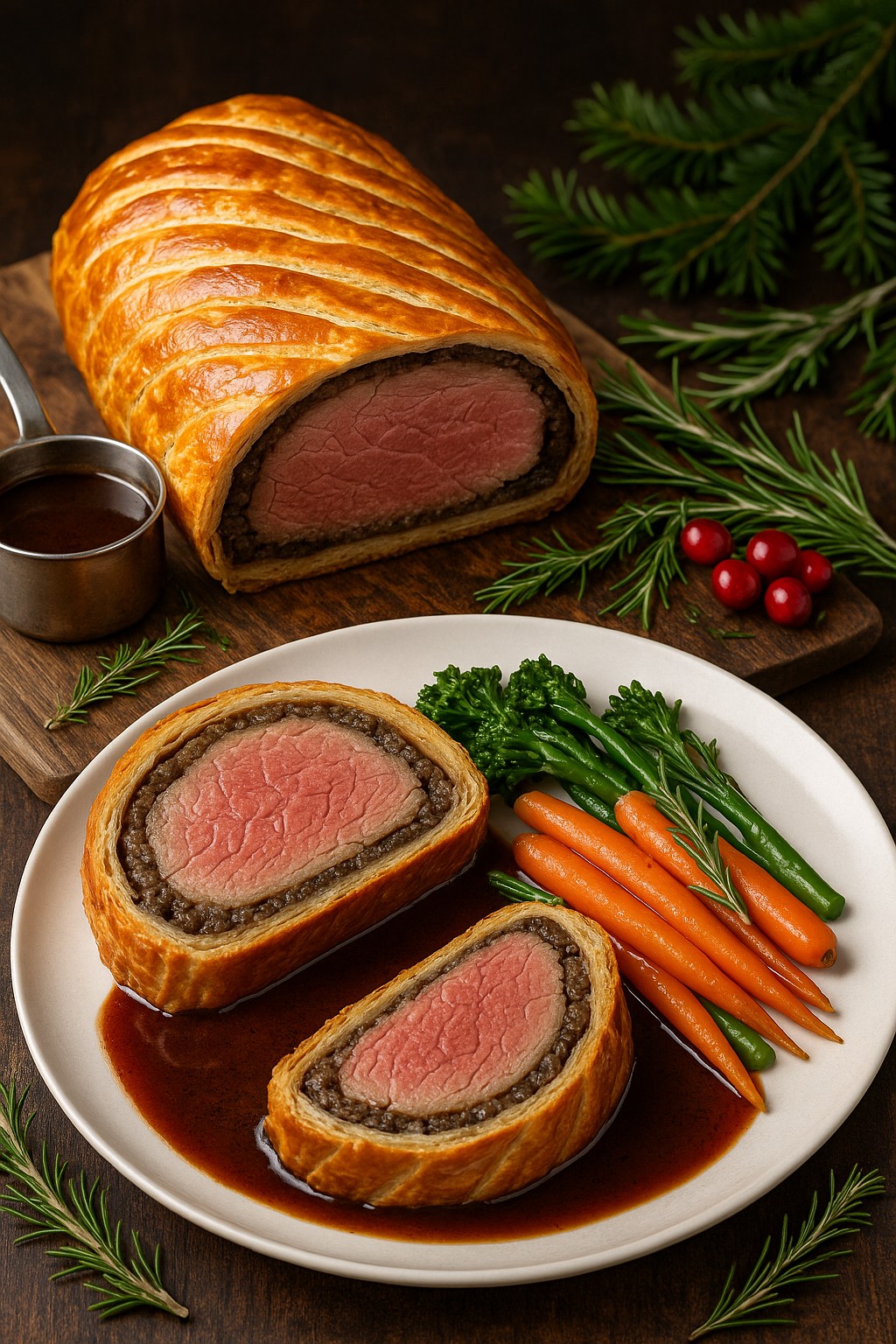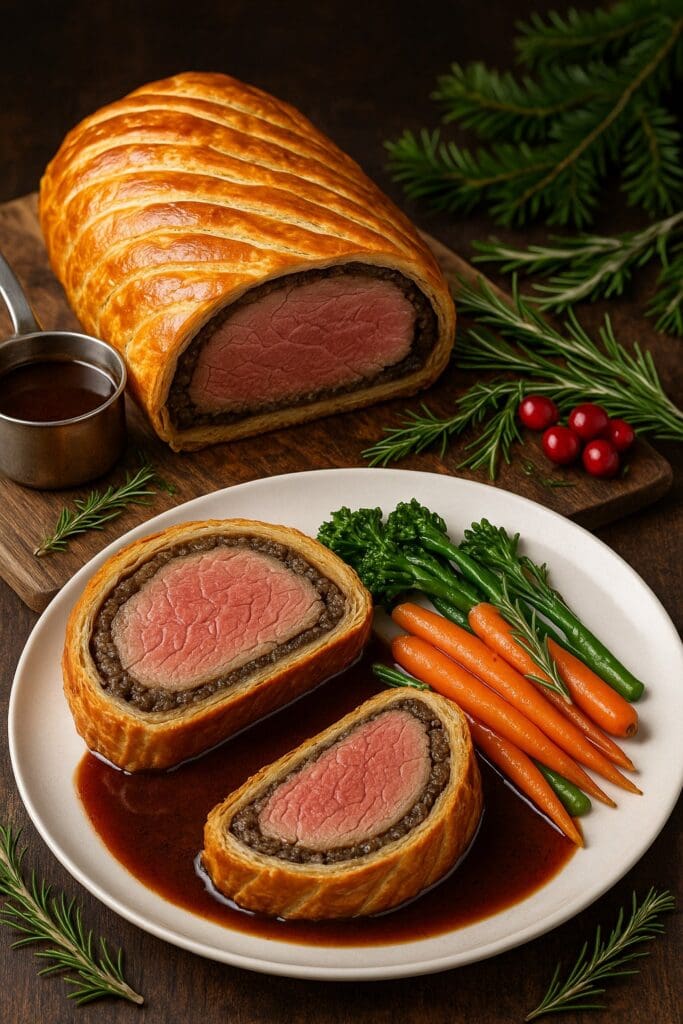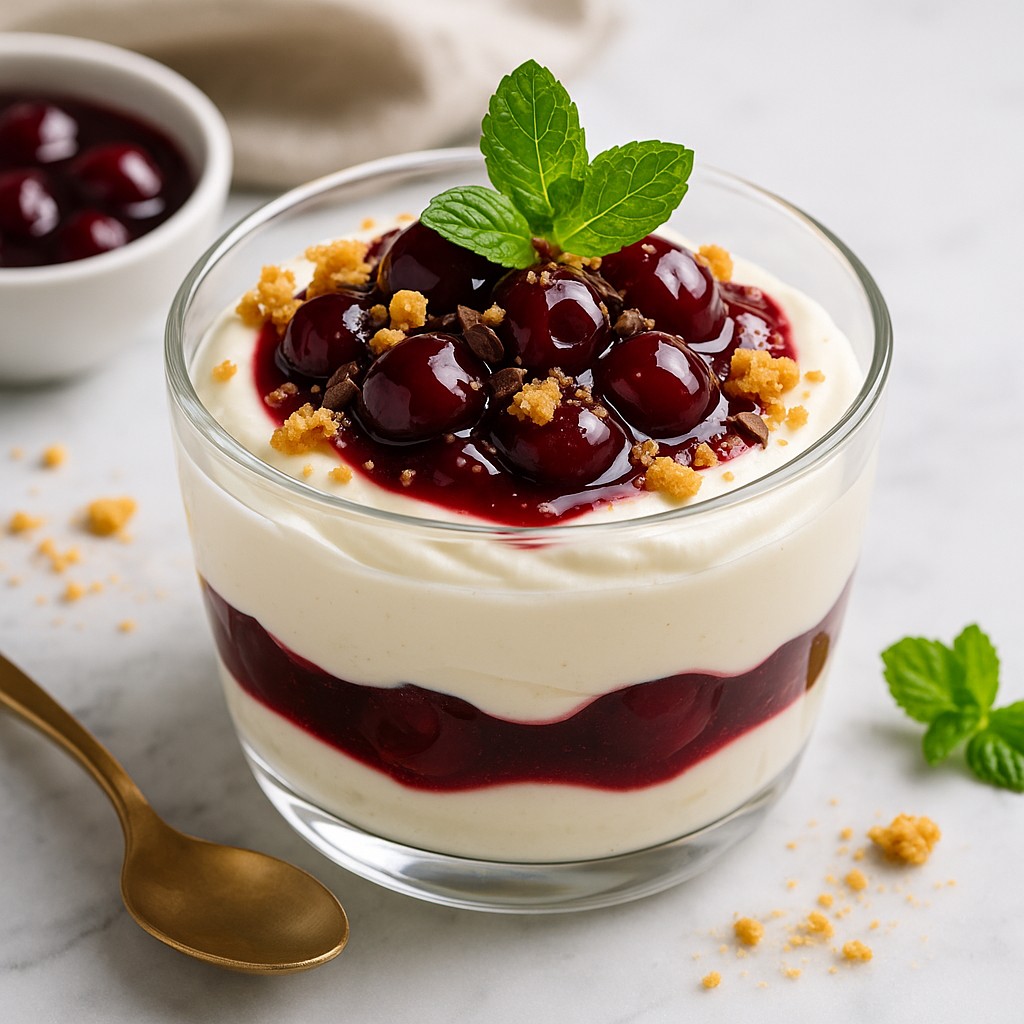
A Show-Stopping Festive Dessert by Nicol Retailer Limited
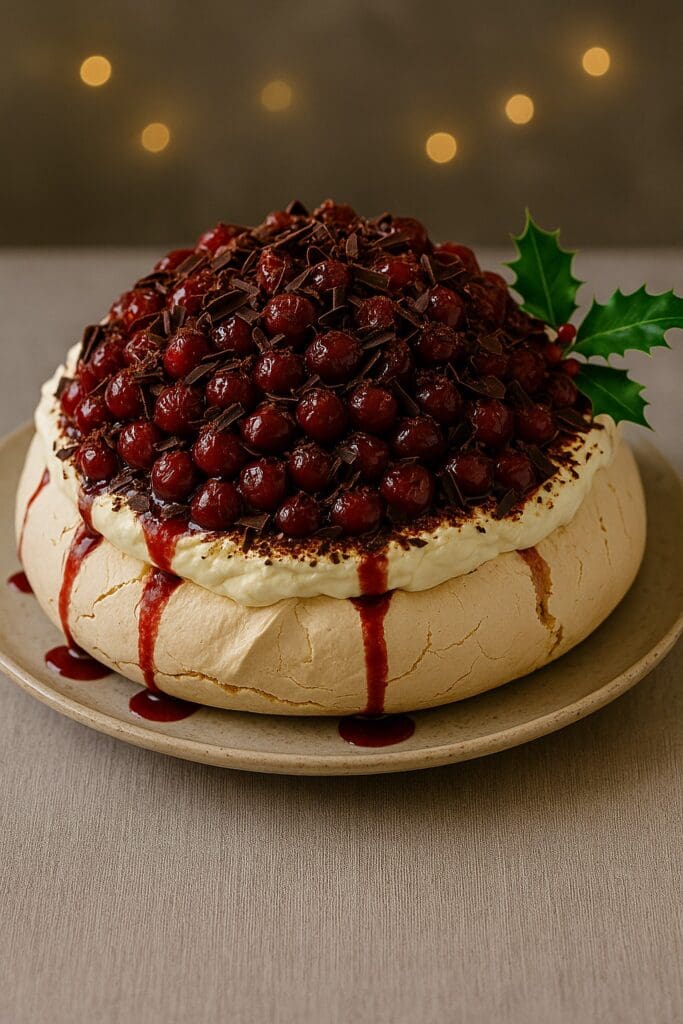
If you’re searching for the ultimate Christmas dessert that looks incredible, tastes luxurious, and delivers a true festive wow-factor, then this Black Forest Christmas Pavlova is the one. With its billowy cloud of meringue, luscious whipped cream, rich dark chocolate shavings and a Christmas is the season of indulgence, celebration and bringing people together through unforgettable food. And when it comes to festive desserts, nothing steals the spotlight quite like this Black Forest Christmas Pavlova topped with Darta Pitted Morello Cherries. With its glossy ruby-red cherries, crisp meringue shell and rich chocolate shavings, this dessert not only tastes extraordinary — it looks like a centrepiece straight from a luxury Christmas magazine.
This recipe has quickly become a top-searched festive dessert thanks to its dazzling presentation, naturally gluten-free base, and the irresistible flavour pairing of chocolate and cherries. Morello cherries, in particular, bring a distinct sweet-tart intensity that cuts beautifully through the sweetness of the pavlova, creating balance, richness and a nostalgic Christmas warmth in every bite.
Crafted and photographed by Nicol Retailer Limited, this recipe is designed to showcase the exceptional quality of Darta Pitted Morello Cherries, a premium ingredient beloved by home bakers and professional chefs alike. Whether you’re hosting Christmas dinner, planning a festive gathering, or creating a show-stopping dessert for the big day, this pavlova offers all the glamour of a traditional Black Forest cake — but with a lighter, cloud-like twist.
The History of Cherries at Christmas
The tradition of using cherries during the Christmas season has deeper historical roots than many realise. Their presence in festive recipes goes back centuries, woven into European winter traditions, religious symbolism and early culinary practices.
Symbol of Prosperity and Celebration
In medieval Europe, cherries were seen as a luxurious ingredient. Fresh cherries were rare in winter, so preserved or dried cherries became a treasured festive treat, symbolising abundance, prosperity and generosity. Using cherries in a Christmas dish was considered a sign of wealth and hospitality — a tradition that continues today with premium Morello cherries.
German and Central European Influence
The Black Forest region of Germany, famous for its cherries and cherry spirits like kirsch, heavily influenced European Christmas baking. From Black Forest gâteau to cherry-filled pastries and winter compotes, cherries became a beloved component of German Weihnachtszeit (Christmas time). Families often preserved sour cherries during summer to enjoy in festive dishes at year-end — a custom still reflected in modern cherry desserts.
The Rise of Victorian Christmas Baking
Victorian Britain cemented many of the Christmas traditions we follow today, including lavish desserts. Cherries were often used in:
- decorative puddings
- winter tarts
- festive trifles
- ornamental cakes
Victorians adored rich, colourful additions to their Christmas tables, and cherries — especially preserved Morello cherries — offered the perfect jewel-toned flourish.
Cherries as a Winter Ingredient
Sour cherries, like Morello cherries, preserve exceptionally well. Whether jarred, canned or dried, their intense flavour makes them ideal for winter baking. Long before frozen fruit was available, families relied on preserved cherries to add brightness to dark winter days — and so cherries naturally became tied to seasonal celebrations.
Modern Christmas Revival
Today, cherries are experiencing a renaissance in festive cooking. Their bold colour, refreshing acidity and ability to balance sweet desserts make them a favourite in:
- pavlovas
- cheesecakes
- cocktail garnishes
- charcuterie boards
- chocolate desserts
The combination of cherries and chocolate — the essence of Black Forest flavours — continues to be one of the world’s most beloved Christmas pairings.
How to Make Christmas Pavlova with Morello Cherries and Chocolate
Get ready to create a truly unforgettable festive showstopper with this Black Forest Christmas Pavlova featuring Darta Pitted Morello Cherries. This beautifully balanced dessert combines a crisp meringue shell, pillowy soft centre, silky whipped cream and luxurious dark chocolate — all crowned with vibrant, glossy Morello cherries supplied by Nicol Retailer Limited. Perfect for Christmas Day, winter gatherings or any celebration where you want a dessert that looks spectacular and tastes even better, this recipe is surprisingly simple to make and delivers outstanding results every time.
Follow the step-by-step instructions below to recreate this stunning pavlova at home and treat your guests to a festive masterpiece they’ll remember long after the last slice is gone:

Winter Black Forest Pavlova with Darta Morello Cherries
Ingredients
For the Meringue Base
- 120 ml Liquid egg white
- 200g g caster sugar
- 1 tsp white vinegar or lemon juice
- 1 tsp cornflour
Instructions
Make the Pavlova
- Preheat the oven to 120°C (100°C fan).
- Line a baking tray with baking paper; draw a 20cm circle to guide the pavlova shape.
- Whisk the egg whites to soft peaks.
- Add the caster sugar 1 tablespoon at a time, whisking until glossy and stiff.
- Gently fold in the vinegar and cornflour.
- Spoon the mixture onto the tray and shape it into a nest with raised sides.
- Bake for 1 hour 30 minutes until crisp.
- Turn off the oven, leave the door slightly ajar, and let the pavlova cool inside for 1 hour.
Prepare the Cherries & Cream
- Whip the double cream with vanilla to soft peaks.
- Gently warm the Morello cherries in a saucepan with the cherry syrup (add a splash of liqueur if desired)
- Let them cool before topping.
Assemble the Dessert
- Place the cooled pavlova on a serving plate.
- Spread the whipped cream over the top.
- Spoon the cherries over the cream, allowing some syrup to drizzle down the sides.
- Finish with dark chocolate shavings and optional orange zest.
- Serve immediately for the best texture — crisp shell, marshmallow centre, and juicy cherries.
Notes
Nutrition
Serving Suggestions
Turn your Black Forest Christmas Pavlova with Darta Morello Cherries into the unforgettable centrepiece of your festive celebration with these indulgent, crowd-pleasing serving suggestions. This pavlova is already strikingly beautiful, but with a few thoughtful touches, it becomes a truly magical dessert moment — the kind guests talk about long after Christmas is over.
For an elegant showstopper effect, present the pavlova on a tall cake stand and allow the cherry syrup to cascade gently down the sides. The deep ruby glow of the Darta Morello Cherries, contrasted with the snowy whipped cream and crisp meringue, creates a dramatic Christmas aesthetic worthy of magazine covers. Just before serving, scatter a handful of dark chocolate shavings and a whisper of orange zest over the top — the aroma alone will have everyone leaning closer.
To elevate each slice, pair it with a scoop of vanilla bean ice cream, clotted cream, or a chilled spoonful of mascarpone. These creamy additions enhance the tartness of the cherries and melt beautifully into the pavlova’s marshmallow centre. For those who enjoy a festive tipple, offer a small glass of kirsch, cherry liqueur, Amaretto, or spiced mulled wine. The warmth and spice complement the rich chocolate notes and fruit beautifully, creating a full sensory experience.
Hosting a larger crowd? Transform this recipe into individual mini pavlovas, allowing each guest to enjoy their own personal dessert masterpiece. They look adorable on a dessert table and allow for customised toppings — think extra chocolate for chocoholics, more cherries for fruit lovers, or even toasted almonds for crunch.
For a truly memorable Christmas moment, serve the pavlova surrounded by glowing fairy lights, festive greenery or seasonal berries. The colours pop under soft lighting, making it perfect for Christmas photos and social sharing — a brilliant touch for your brand’s online presence or for customers who love posting their holiday creations.
Whether enjoyed on Christmas Eve, served proudly after Christmas dinner, or shared on Boxing Day with leftover prosecco, this pavlova brings comfort, elegance and a hint of nostalgic Black Forest charm. With its blend of sweetness, tart fruit, and festive flavours, it promises to be a dessert that guests remember — and request — year after year.
Shop the Star Ingredients at Nicol Retailer Limited
Bring this unforgettable Black Forest Christmas Pavlova to life using the finest, chef-approved ingredients — all conveniently available from Nicol Retailer Limited. We’re proud to supply premium-quality ingredients trusted by home bakers, professional chefs, cafés and catering businesses across the UK.
Darta Pitted Morello Cherries – The Star of the Recipe
- No ingredient defines this dessert quite like our Darta Pitted Morello Cherries. Known for their vibrant ruby colour, bold flavour and perfect sweet–tart balance, these cherries instantly elevate any festive recipe. Their rich syrup and natural fruitiness pair beautifully with chocolate, meringue and whipped cream, making them the ultimate centrepiece for Christmas desserts. Our cherries are:
- Plump and juicy
- Pitted for convenience
- Packed in generous 1kg bags
- Perfect for pavlovas, Black Forest cakes, cocktails, cheesecakes & festive bakes
These cherries aren’t just an addition — they’re a statement ingredient that makes your dessert look spectacular and taste unforgettable.
Recreate This Festive Showstopper With Nicol Retailer Limited
From the hero ingredient — Darta Pitted Morello Cherries — to the chocolate, sugar, cream and flavourings, everything you need for this Black Forest Christmas Pavlova is available to buy now at Nicol Retailer Limited.
Make this Christmas unforgettable with ingredients that inspire creativity and deliver exceptional results.
For more premium-quality baking ingredients and festive essentials, visit Nicol Retailer Limited’s online store to explore the full range of products, including the exceptional Darta Pitted Morello Cherries:
https://nicolretailer.com/












